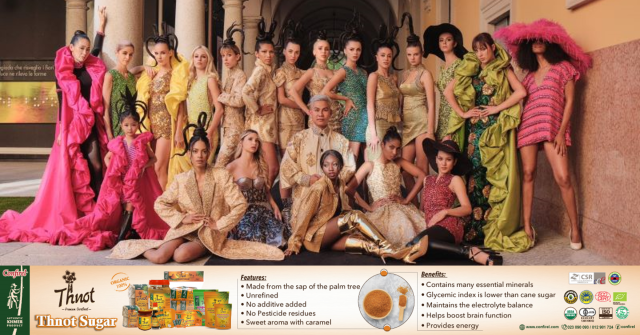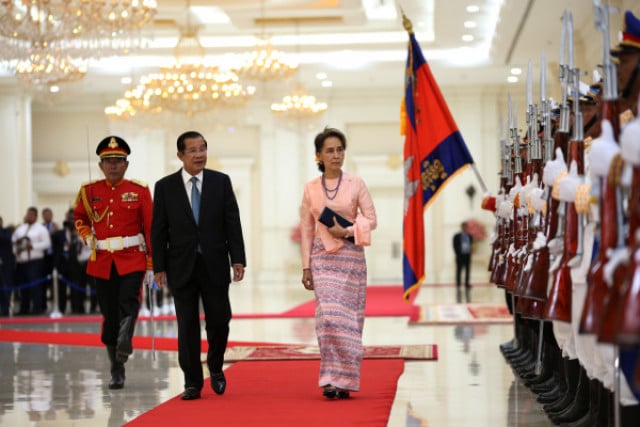Apsara Figures Inspire Italian Fashion Award Winner

- By Po Sakun
- November 27, 2023 3:30 PM
PHNOM PENH – Cambodian designer Oliva Kong has won a top award at Milan Fashion Week in Italy with a collection inspired by mythological Apsara dancer figures at Angkor Wat.
He was among 16 top designers from around the world who won prizes at the event, which ran from Sep. 19 to 25.
“What excited me most was when the organizers of the event allowed my models to descend from upstage while other models had to ascend from downstage,” he said.
Before the event, Oliva Kong had to explain this idea to get approval from the organizers.
He said his collection was taken from “women leadership” and Apsara Angkor. The word “Apsara” means “fairy” and a fairy descends from heaven. It is impossible to let the fairy ascend from downstage.

The idea of taking Apara Angkor into his designs was initiated when he was a vegan monk for a week at a pagoda near Angkor Wat.
He was able to explore himself and was inspired by the carvings of bokator fighters and Apara Angkor’s hairstyles on the temple walls.
During the show, audiences cheered with enthusiasm and support, which made him even more delighted, he said. They were also curious where his ideas came from.
After the show, he went to Switzerland and France to do more research on the differences between Khmer and those countries’ fashion.
Oliva Kong said he was excited to represent Cambodia and felt proud to be born as a Cambodian. He is curious when some people hesitate in telling foreigners that they are Cambodian.
Unlike him, regardless of which country he went to, he always said that he comes from Cambodia. Surprisingly, foreigners there also knew Angkor Wat.
On Dec. 16, he and his team will participate in the Asian Fashion Runway Collection in Malaysia.
“I am very excited that this time we got support and encouragement from the Ministry of Culture and Fine Arts. I am looking to seeing more support from the public audiences,” he said.
Originally written in Khmer for ThmeyThmey, this story was translated by Rin Ousa for Cambodianess.















